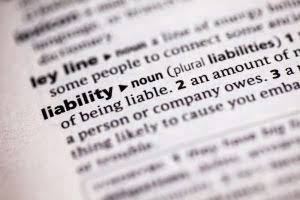Search
What is the Accounting Equation? Explaining Assets = Liabilities + Equity
November 30, 2020

For a company keeping accurate accounts, every business transaction will be represented in at least two of its accounts. For instance, if a business takes a loan from a bank, the borrowed money will be reflected in its balance sheet as both an increase in the company’s assets and an increase in its loan liability. It is seen that the total credit amount equals the total debt amount. It is fundamental to the double-entry bookkeeping system of accounting, which helps us understand from the illustration above that total assets should be equal to total liabilities. If the equation is balanced then the financial statement can be prepared. Every business transaction affects the accounting equation, either by increasing or decreasing its components.
Importance of Owner’s Equity for Investors and Stakeholders
Every accounting entry has an opposite corresponding entry in a different account. This principle https://x.com/BooksTimeInc ensures that the Accounting Equation stays balanced. Owner’s or stockholders’ equity also reports the amounts invested into the company by the owners plus the cumulative net income of the company that has not been withdrawn or distributed to the owners.
Company
The balance sheet is also known as the statement of financial position and it reflects the accounting equation. The balance sheet reports a company’s assets, liabilities, and owner’s (or stockholders’) equity at a specific point in time. Like the accounting equation, it shows that a company’s total amount of assets equals the total amount of liabilities plus owner’s (or accounting equation assets liabilities equity stockholders’) equity. Examples of assets include cash, accounts receivable, inventory, prepaid insurance, investments, land, buildings, equipment, and goodwill. From the accounting equation, we see that the amount of assets must equal the combined amount of liabilities plus owner’s (or stockholders’) equity.

Shareholders’ Equity
All the entries made to the debit side of a balance sheet should have a corresponding credit entry on the balance sheet. This equation should be supported by the information on a company’s balance sheet. The Accounting Equation is the foundation of double-entry accounting because it displays that all assets are financed by borrowing money or paying with the money of the business’s shareholders. The accounting equation is important as it lays the foundation of accounting and the double-entry system. It ensures accuracy in recording financial transactions and ensures that the balance sheet is balanced. It provides stakeholders an effective way to analyze the financial position of the firm.

Double entry system ensures accuracy and completeness in its accounting system. This methodical approach is fundamental to the accounting system’s integrity. Liabilities are financial obligations or debts that a company owes https://www.bookstime.com/ to other entities. An asset is a resource that can provide current or future economic benefit to the organization who owns or controls the asset. Assets are reported on a company’s balance sheet and comprises various asset types such as intangible assets, financial assets, fixed assets and current assets. An income statement will also be produced and explains the changes in retained earnings during the period.

Accrual vs Cash Basis Accounting: Choosing the Right Accounting Method
- Current liabilities are obligations that the company should settle one year or less.
- Thus, these problems should be noted by all companies and strict method of valuation and recording of transactions should be done to control such problems.
- It can be found on a balance sheet and is one of the most important metrics for analysts to assess the financial health of a company.
- Thus from the above details we can understand how to do accounting equation.
- In reality, a business may have thousands, with each one affecting at least two accounts.
- Hence, this forms the basis of many analyses for market investors, financial analysts, research analysts, and other financial institutions.
Equity is also referred to as net worth or capital and shareholders equity. The Accounting Equation is the primary accounting principle stating that a business’s total assets are equivalent to the sum of its liabilities & owner’s capital. It is also known as the Balance Sheet Equation & it forms the basis of the double-entry accounting system. The revenue a company shareholder can claim after debts have been paid is Shareholder Equity. Any discrepancies between recorded assets and the sum of equity and liabilities signal an anomaly and a need for corrections in account balances. The brilliance of the double-entry system lies in its self-balancing mechanism, acting as a check-and-balance system to reduce errors and uphold financial data integrity.
Important Links:
Tags:
Courses
-
MBA for Executives
-
testssd
-
testssd
-
testssd
-
testssd
-
testssd
-
BBA from UK University
-
Banking course + Job
-
MBA from ARU, Anglia Ruskin University (UK)
-
4-IN-1 Professional Diploma in Banking, Financial Services & Insurance (PDBFSI)
-
MBA from HSNC University (Mumbai, India)
-
Sage Foundation - Professional Diploma in Banking
-
3-in-1-management-program
-
Post Graduate Diploma in Banking & Finance
-
Post Graduate Diploma in Digital Marketing
-
Post Graduate Diploma in Integrated Marketing, Advertising & Communication
-
4-IN-1 Professional Diploma in Banking, Financial Services & Insurance (PDBFSI)
-
Professional Diploma in Digital Marketing
-
Professional Diploma in Real Estate Management
-
Professional Diploma in Photography
-
Certificate in Business English
